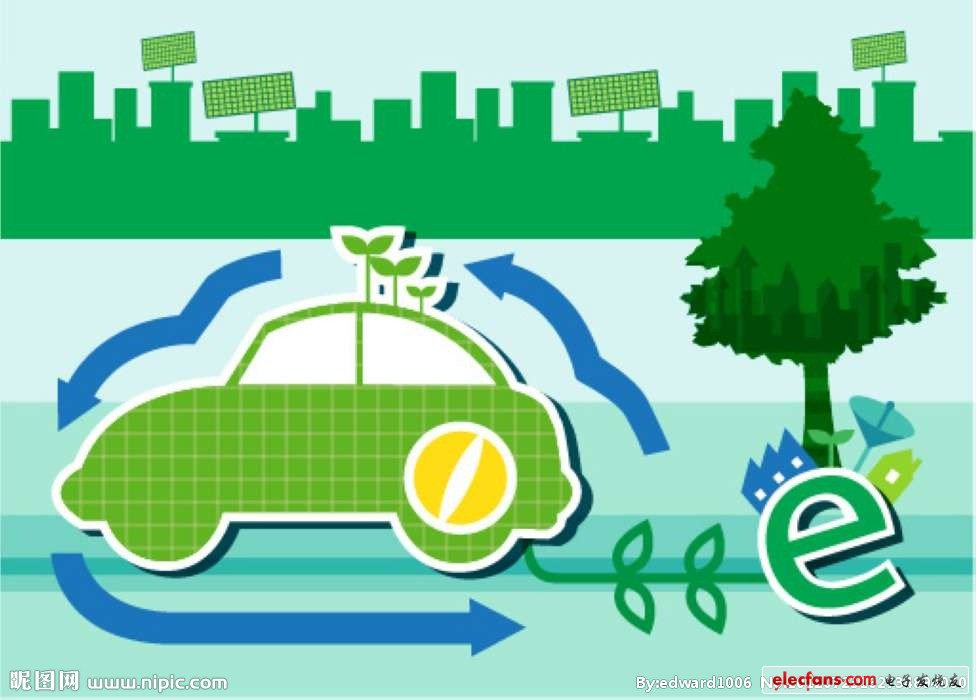The World Economic Forum ’s Global Emerging Technology Agenda Council identified 10 new technologies that will make decisive progress in 2013. These technologies will enable medicine, energy, manufacturing, road safety, climate change and other fields to achieve unimaginable 10 years ago. progress.
1. "Online" electric vehicles
Wireless technology can power cars. The next generation of electric vehicles can obtain electrical energy from the electromagnetic field emitted by the cables laid under the highway, and charge the on-board battery to drive the car when it is out of the electromagnetic field. Due to the external power supply, this kind of car only needs to have 1/5 of the storage capacity of a standard electric car. Currently, "online" electric vehicles are undergoing road tests in Seoul, South Korea.

2. Three-dimensional (3D) printing technology and remote manufacturing
With 3D printing technology, solid structures can be manufactured based on digital design files. Once the items can be printed remotely at home or office, the new technology will trigger a manufacturing revolution. During the printing process, the printer will accumulate plastic, metal, alloy and other materials layer by layer from the bottom according to the model designed by the computer.

3. Automatic repair materials
One of the characteristics of living tissue is the ability to repair damage. A major trend in bionics is to create inanimate structures with the ability to repair scratches, tears or cuts. This kind of material that can repair damage without human intervention will extend the life expectancy of manufacturing products and reduce the need for raw materials.
4. Efficient seawater desalination technology
With the increasing use of water for human activities such as agriculture, the number of cities is increasing and the scale is increasing, and water shortage has become an increasingly serious ecological problem. In the case of over-exploitation of natural water sources, seawater desalination can provide almost inexhaustible fresh water, but this process consumes a lot of energy.
5. Conversion and utilization of carbon dioxide
New technologies that turn carbon dioxide into commodities will overcome economic or energy barriers to climate change strategies. One of the most promising methods is the use of photosynthetic bacteria to convert carbon dioxide into liquid fuel or other chemicals. It is expected that a single system using this technology will reach a scale of 100 hectares within two years. This system will solve the environmental limitations of biofuels and provide low-carbon fuels for cars and airplanes.
6. Improve nutrition at the molecular level
Even in developed countries, millions of people suffer from malnutrition due to dietary deficiencies. Now, new genetic technology can determine a large number of proteins that have an important impact on the human diet at the gene sequence level. Large-scale production of proteins based on related biotechnology will play an active role in health, such as promoting muscle growth, controlling diabetes and reducing obesity.
7. Remote Sensor
The widespread use of sensors that respond passively to external stimuli will change the way we respond to environmental changes, especially in the health field.
Examples include sensors that continuously monitor body functions such as heart rate and blood sugar levels. These advancements depend on the development of wireless transmission technology between devices. Another application is sensors installed on cars that can improve road safety.
8. Manage medicines through nanotechnology
Drugs can be applied directly in or around diseased cells at the molecular level, providing unprecedented opportunities for developing methods that can more effectively fight cancer and other diseases and reduce their side effects. Localizing nano-sized particles in diseased tissue and releasing powerful therapeutic ingredients can reduce the impact on healthy tissue. After nearly 10 years of research, this new technology is close to clinical application.
9. Organic and photovoltaic electronics
Organic electronics is a type of printed electronics that uses organic polymer materials to make circuits and electronic devices. Compared with traditional silicon semiconductor devices manufactured by expensive photolithography, organic electronic devices are much lower in both single cost and equipment cost. Mass production of photovoltaic panels using this low-cost technology can accelerate the transition to renewable energy.
10. The fourth generation of nuclear reactors and nuclear waste recycling
Current nuclear reactors use only 1% of the available energy potential of uranium, and other parts have become radioactive nuclear waste. Recovering nuclear fuel and converting uranium-238 into new fissile material will expand the already extracted uranium resources in the next few centuries, greatly reducing the amount of uranium mining and the toxicity of nuclear waste. The radioactivity of nuclear waste will decay to a safe state in hundreds of years instead of the thousands of years required in the past. At present, many countries are developing fourth-generation nuclear reactor technology.
Incremental Encoder is commonly used, and Absolute Encoder is used if there are strict requirements on position and zero position. Servo system should be analyzed in detail, depending on the application situation. Commonly used incremental encoder for speed measurement, which can be used for infinite accumulation measurement; Absolute encoder is used for position measurement, and the position is unique (single or multiple turns). Finally, it depends on the application situation and the purpose and requirements to be realized.
Incremental Linear Encoders,Linear Optical Encoder,Linear Position Encoder,Encoder Bearing Tester
Yuheng Optics Co., Ltd.(Changchun) , https://www.yhenoptics.com
